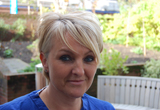 When does a hospital’s duty of care end? Great care is placed in patient pathways, but little recognition given to what happens after a patient dies.
When does a hospital’s duty of care end? Great care is placed in patient pathways, but little recognition given to what happens after a patient dies.
The challenge is that death has something of an image problem and so, by association, do mortuaries. As a result, our work is often misunderstood by the public and fellow health professionals.
It’s important to realise that the deceased are still classed as patients until released to the undertaker and therefore we still have duty of care.
A lot of paper work accompanies our entry into life and a lot of paperwork accompanies its departure. It is all part and parcel of our work alongside assisting on autopsies to determine cause of death
There is an assumption that mortuaries deal solely with the deceased.
In reality, a sizeable part of our job is dealing with the living in the shape of spouses and family members who are left behind to pick up the pieces.
The way people are treated has an enormous impact on what they think of hospital services and care and compassion run through our day-to-day duties.
The work of a mortuary technician is not for the faint-hearted, but neither is it the cold clinical world that is often misrepresented in TV dramas.
Mortuaries have a long standing reputation for being dark creepy places populated by ghoulish individuals and, in truth, archive material from St George’s Hospital dating back to the 1800s does little to dispel the image.
Harper, the postmortem room attendant, is noted as “running an illicit practice under the tile of Dr ‘Arper of St George’s ‘Orspital.” after being snubbed for a choice job as national hangman.
His colleague Arlett, the anatomy porter, sounds equally unsavoury and is described as “an ogreish-looking individual with bulky trunk on short, insufficient legs and a small son whose grim diversion was to fish with rod and hook for the bandaged limbs in the dissecting-room tank.”
In reality, today’s mortuary technicians are just like everyone else and we work hard to ensure that, for visiting relatives, it is place of warmth, respect, and dignity.
That might sound strange, but our duty of care is to both the dead and the living and a particularly sensitive area involves babies and young children.
St George’s is also a regional perinatal centre for south London and south east England, and I am lead technician in this area. I assist the pathologist in around 500 premature and still births cases per year, which also includes infants and young children.
As part of the postmortem procedure, I weigh, measure, and take x-rays of the babies and children. Once the examination is finished the babies or children are washed and redressed. Any personal belongings left by the family are kept with the child at all times and families can always bring items in to go with the child.
I offer parents to come in and see their babies especially after postmortem examinations, including holding them, and, where appropriate, washing and redressing them. It’s an important part of the healing process, and this allows them to spend time with their child before saying goodbye. This dispels any myths of what people perceive and hear about what happens in autopsy work.
I’m also clear about explaining what procedure the child has undergone so they know why we have done an autopsy and ensure incision marks are covered with an appropriate dressing. Parents appreciate the candour and the fact that their child is being looked after while in our care.
It’s the toughest part of my job, but also the most rewarding. I had a young mother who came every day for three weeks to see her child, and the change in her was noticeable during that time.
People often ask me to how I cope emotionally, but it is a job as well as a vocation. We all remember our first autopsy. Mine was an elderly woman who had died of pneumonia. I just remember a surreal detachment descending on me.
Some people might think that is cold, but it is just a natural protective mechanism to help you cope. I’ve carried out hundreds of autopsies since then and work on autopilot with my emotions in check. You just switch back on after the procedure is completed and focus on the care of somebody’s loved one.
The job isn’t for everyone, but there has been a noticeable rise in the number of female technicians in what used to be a male dominated profession. Care, compassion, and understanding are all important attributes in my line of work
The combination of scientific investigation and dealing with the bereaved is a challenge, but also provides a lot of job satisfaction. I’ve been working in this field for more than a decade and can’t see myself wanting to do anything else.
Competing interests: I declare that that I have read and understood the BMJ Group policy on declaration of interests and I have no relevant interests to declare.
Barbara Peters is a senior anatomical pathology technician at St George’s Hospital Mortuary in London. Barbara is also the lead perinatal technician in this area. Barbara has been in the NHS for over 20 years, previously working for North Bristol Health Trust and Ayrshire & Arran NHS Trust and has been in her current role for nearly 10 years.
